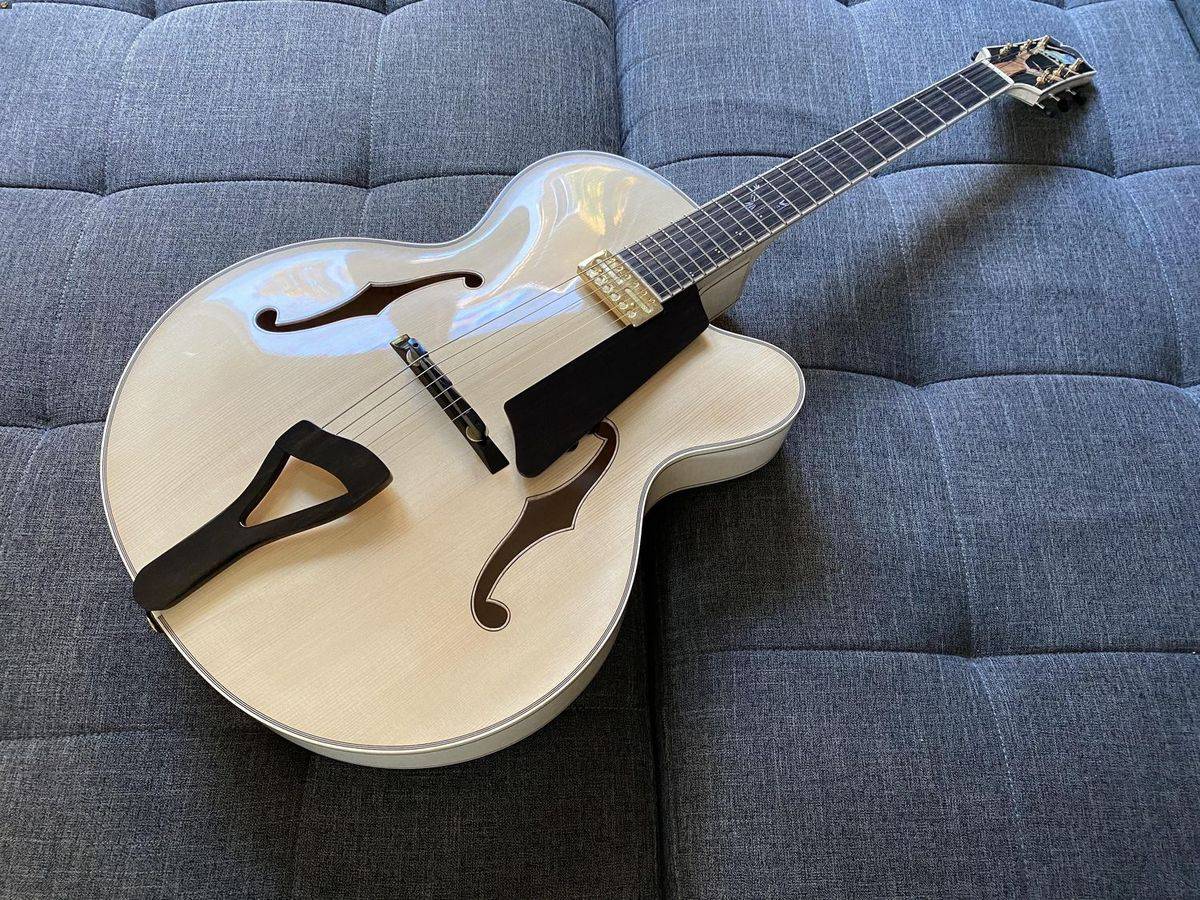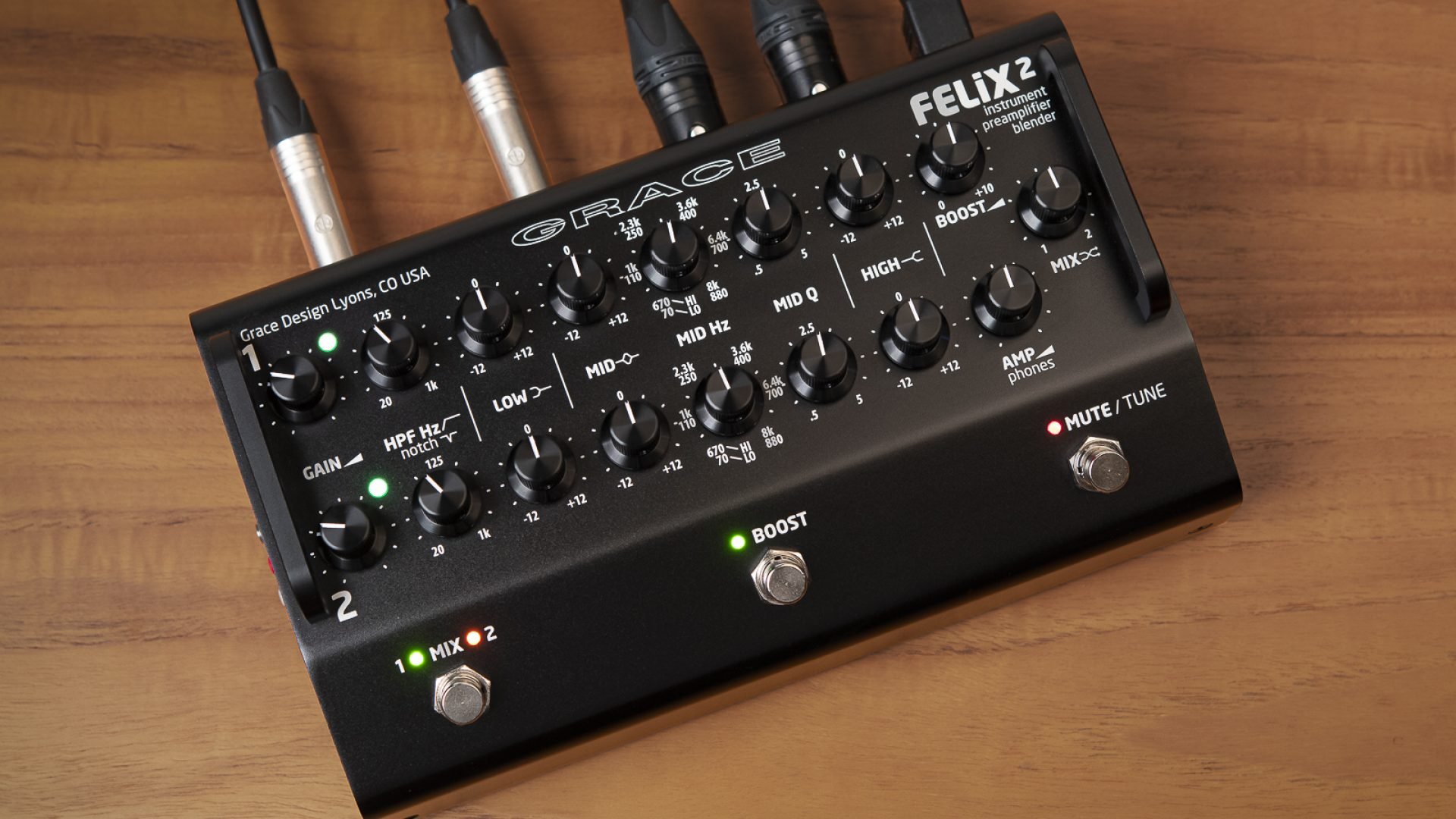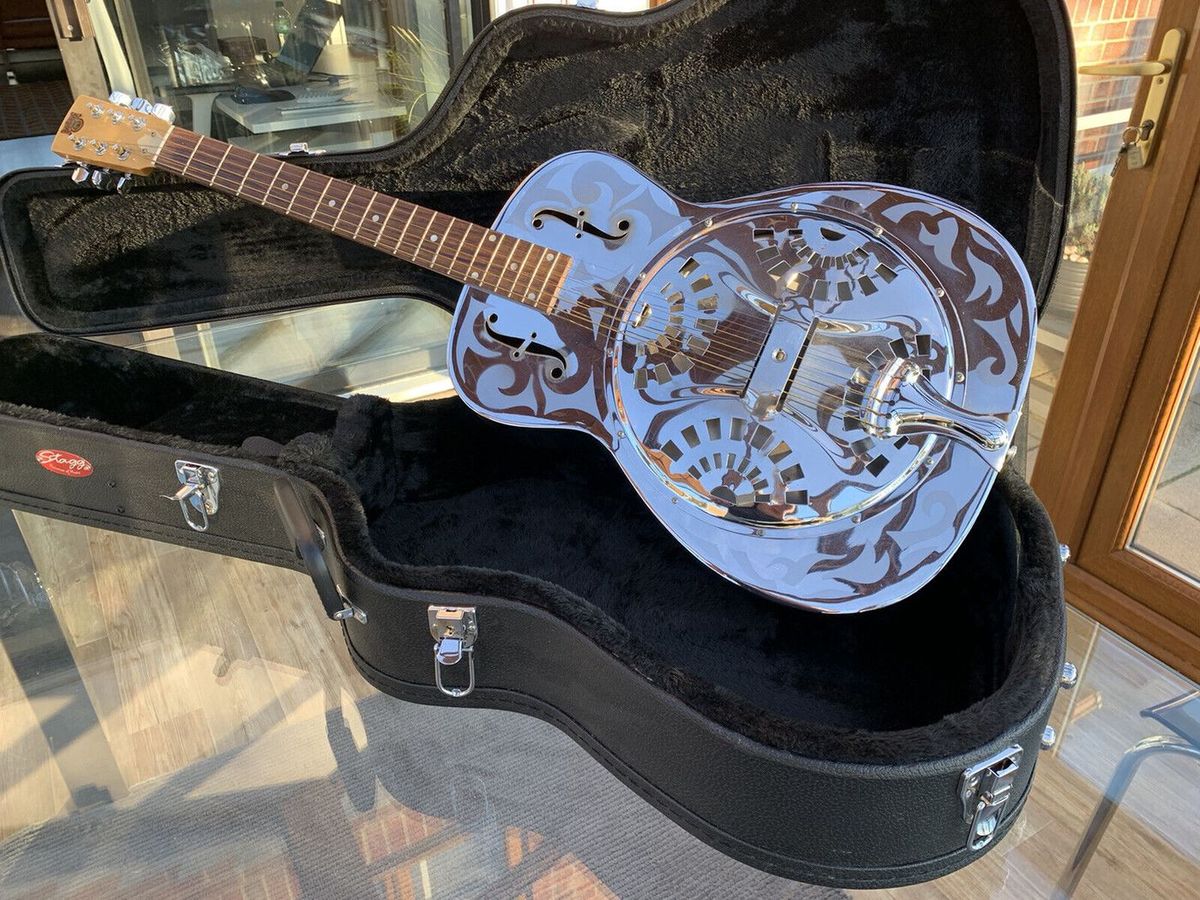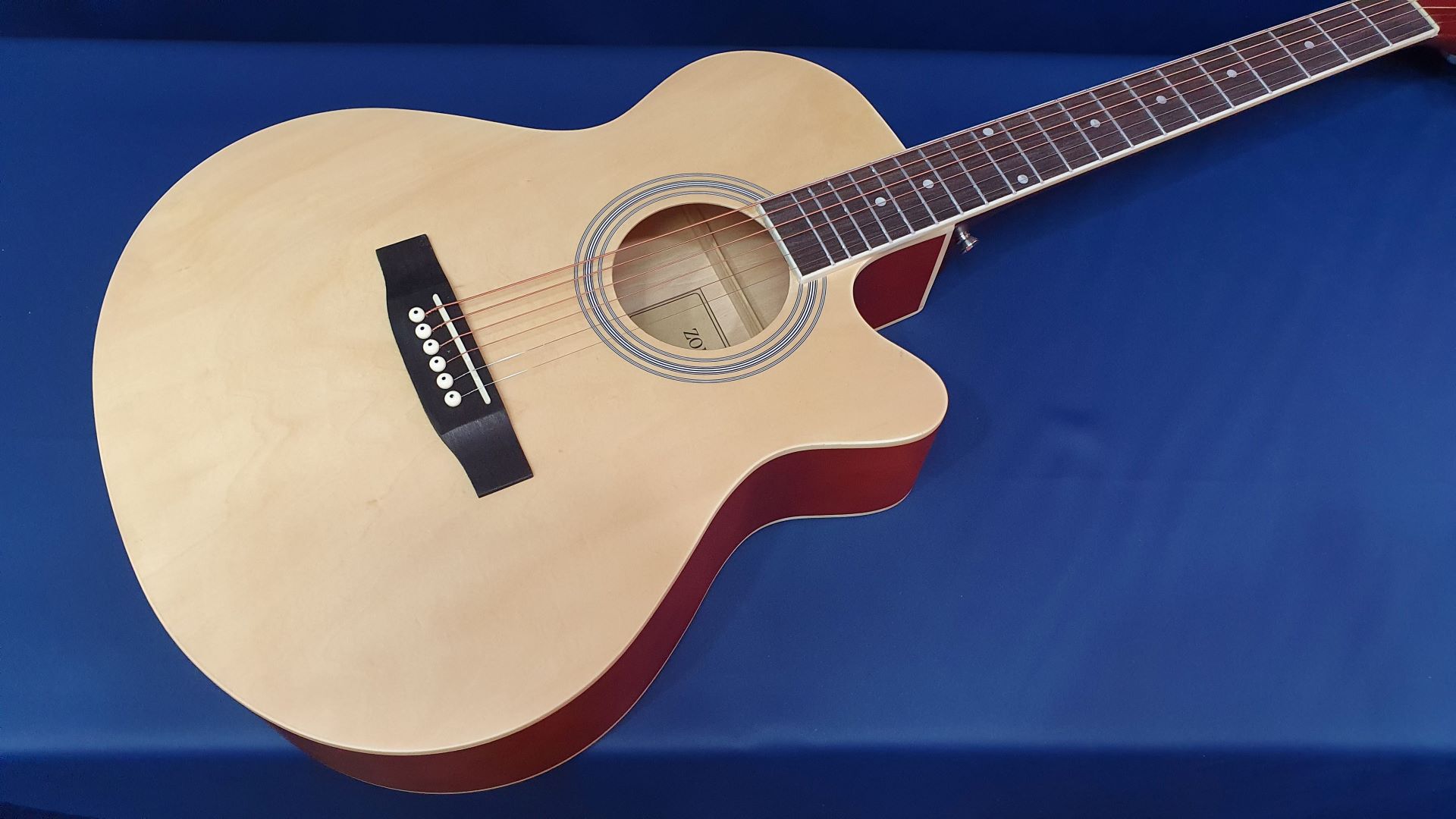Home>Instruments>Guitar>What Is A Multiscale Guitar


Guitar
What Is A Multiscale Guitar
Published: February 15, 2024
Discover the versatility and unique sound of a multiscale guitar. Learn how it enhances playability and tone for guitarists of all levels. Explore the benefits today!
(Many of the links in this article redirect to a specific reviewed product. Your purchase of these products through affiliate links helps to generate commission for AudioLover.com, at no extra cost. Learn more)
Table of Contents
Introduction
When it comes to musical instruments, the guitar holds a special place in the hearts of many. Its versatility and ability to evoke a wide range of emotions have made it a beloved instrument across various genres of music. Over the years, guitar makers and players have continuously sought ways to innovate and improve the instrument, leading to the development of various types and styles of guitars. One such innovation that has gained attention in recent years is the multiscale guitar.
The multiscale guitar, also known as a fanned-fret guitar, is a unique instrument that has been designed to address certain limitations of traditional guitars. Its distinctive feature is the varying scale lengths for each string, which means that the length of the strings differs, with the bass strings having a longer scale length compared to the treble strings. This innovative design has sparked interest and curiosity among guitar enthusiasts and players alike.
In this article, we will delve into the world of multiscale guitars, exploring what sets them apart from traditional guitars, the benefits they offer, and the challenges they present. Whether you are a seasoned guitarist or someone with a budding interest in the instrument, understanding the nuances of multiscale guitars can provide valuable insight into the evolution of this timeless instrument and its potential impact on your musical journey. So, let's embark on a fascinating exploration of the multiscale guitar and discover the unique characteristics that make it a compelling choice for musicians seeking innovation and versatility in their craft.
What Is a Multiscale Guitar?
A multiscale guitar is a type of guitar that features varying scale lengths for the strings, as opposed to the uniform scale length found in traditional guitars. This unique design is intended to optimize the tension, intonation, and overall playability of the instrument. The multiscale design typically involves angling the frets so that the bass strings have a longer scale length compared to the treble strings. This results in a fan-like arrangement of the frets, hence the alternate name “fanned-fret guitar.”
The varying scale lengths in a multiscale guitar are aimed at addressing certain challenges encountered in traditional guitars. One of the key benefits of this design is the improved tension balance across the strings. In a standard guitar, the lower-pitched strings often require higher tension to maintain proper intonation and resonance, while the higher-pitched strings are typically under lower tension. This discrepancy in tension can affect the overall feel and playability of the instrument. With a multiscale guitar, the scale lengths are optimized for each string, allowing for more balanced tension and improved string-to-string response.
Additionally, the multiscale design can contribute to enhanced clarity and definition, particularly for lower-tuned strings. By accommodating longer scale lengths for the bass strings, the instrument can better handle lower tunings without sacrificing tonal quality or playability. This is especially beneficial for guitarists who explore extended-range playing or genres that demand deeper, more resonant tones.
Furthermore, the multiscale layout can offer ergonomic advantages, as it can align more closely with the natural positioning of the hand and fingers, providing a more comfortable and intuitive playing experience. While the visual appearance of a multiscale guitar may initially appear unconventional due to the angled frets, the ergonomic benefits and sonic enhancements it offers have garnered interest and appreciation from musicians seeking a modern and innovative approach to guitar design.
Benefits of Multiscale Guitars
Multiscale guitars offer a range of benefits that cater to the diverse needs and preferences of guitarists, contributing to an enriched playing experience and expanded creative possibilities. Here are some of the notable advantages of multiscale guitars:
- Improved String Tension Balance: One of the primary benefits of multiscale guitars is the enhanced balance of string tension across the instrument. By optimizing the scale lengths for each string, these guitars mitigate the tension disparities commonly found in traditional guitars, resulting in a more uniform feel and responsiveness across the fretboard. This balanced tension contributes to greater comfort and control for the player, facilitating smooth transitions between strings and fret positions.
- Enhanced Intonation and Resonance: The multiscale design promotes improved intonation and resonance, particularly for lower-pitched strings. With longer scale lengths allocated to the bass strings, the instrument can maintain better intonation and clarity, even when tuned to lower registers. This enhancement is especially advantageous for guitarists who explore extended-range playing or genres that rely on deep, articulate bass tones.
- Ergonomic Comfort: Multiscale guitars are designed to align with the natural ergonomic positioning of the hand and fingers, offering enhanced comfort and playability. The angled frets and varying scale lengths accommodate the hand’s natural curvature, reducing strain and promoting a more relaxed and efficient playing posture. This ergonomic advantage can be particularly beneficial during prolonged practice sessions and live performances, contributing to overall playing endurance and dexterity.
- Expanded Creative Potential: The unique sonic characteristics and improved playability of multiscale guitars can inspire new avenues of creativity for guitarists. The instrument’s ability to handle lower tunings with clarity and definition opens doors to innovative compositions and arrangements, allowing musicians to explore a broader spectrum of tonal possibilities and musical expressions.
These benefits collectively position multiscale guitars as a compelling choice for players seeking a modern, versatile instrument that harmonizes technical precision with artistic exploration. Whether used in studio recordings, live performances, or personal practice sessions, the advantages of multiscale guitars underscore their capacity to elevate the musical journey of guitarists and enrich the sonic landscape of contemporary music.
Challenges of Multiscale Guitars
While multiscale guitars offer a host of benefits, they also present certain challenges that warrant consideration for both aspiring and experienced players. Understanding these challenges can provide valuable insights into the nuanced aspects of multiscale guitars and aid in informed decision-making. Here are some key challenges associated with multiscale guitars:
- Adaptation Period: Transitioning from a traditional guitar to a multiscale instrument may require an adaptation period for players to acclimate to the unique fret layout and varying scale lengths. This adjustment phase involves familiarizing oneself with the altered hand positioning and finger placements across the fretboard. While this learning curve is manageable for many players, it is essential to acknowledge the initial adjustment period when integrating a multiscale guitar into one’s repertoire.
- String Replacement and Setup: The multiscale design necessitates careful attention to string selection and setup to ensure optimal performance. Acquiring suitable strings tailored to the specific scale lengths of a multiscale guitar is crucial for maintaining consistent tension and intonation. Additionally, the setup process, including adjustments to the bridge, nut, and intonation, may require specialized expertise to achieve the desired playability and tonal characteristics. This aspect underscores the importance of seeking professional guidance or acquiring relevant knowledge for effectively managing the setup and maintenance of multiscale guitars.
- Limited Availability and Customization: While the popularity of multiscale guitars has grown in recent years, they may still be less readily available in comparison to traditional guitars, particularly in certain regions. Additionally, the customization options for multiscale instruments, such as specific fret configurations and scale length variations, may be more limited compared to standard guitar models. As a result, aspiring players seeking highly customized multiscale guitars may encounter challenges in accessing their preferred specifications and configurations, necessitating thorough research and potential collaboration with luthiers or specialized manufacturers.
- Educational Resources and Support: Given the distinct nature of multiscale guitars, aspiring players may encounter a relatively narrower pool of educational resources, instructional materials, and community support specifically tailored to multiscale instruments. This can pose challenges in accessing comprehensive guidance and communal engagement for mastering the intricacies of multiscale guitar playing and maintenance. However, with the burgeoning interest in multiscale guitars, the availability of specialized resources and support networks is gradually expanding, offering valuable assistance to players navigating the unique features of these instruments.
By acknowledging and addressing these challenges, players can approach the integration of multiscale guitars into their musical pursuits with informed preparation and a nuanced understanding of the considerations involved. While the challenges may require thoughtful navigation, the potential rewards of embracing multiscale guitars as innovative and expressive instruments can significantly enrich the musical journey and artistic endeavors of dedicated guitarists.
Conclusion
The emergence of multiscale guitars represents a compelling evolution in the realm of guitar design, offering a harmonious blend of technical innovation and artistic inspiration. With their distinctive fret layout and varying scale lengths, multiscale guitars have redefined the possibilities of the instrument, catering to the diverse needs and preferences of modern guitarists.
Through an exploration of the benefits and challenges associated with multiscale guitars, it becomes evident that these instruments hold immense potential for enhancing the musical experiences of players across genres and skill levels. The balanced string tension, improved intonation, and ergonomic comfort offered by multiscale guitars contribute to a heightened sense of control, expression, and playability, empowering guitarists to delve into new sonic territories and creative frontiers.
While the adaptation period and specialized setup requirements pose initial considerations for aspiring players, the rewards of embracing multiscale guitars extend far beyond the initial learning curve. These instruments serve as catalysts for expanded creative expression, enabling musicians to venture into extended-range playing, innovative compositions, and genre-spanning performances with confidence and precision.
As the demand for multiscale guitars continues to grow, the accessibility of educational resources, community support, and customization options is steadily expanding, further enriching the landscape for enthusiasts and professionals alike. The evolving discourse surrounding multiscale guitars reflects a vibrant fusion of tradition and innovation, where the timeless allure of the guitar converges with contemporary advancements to inspire a new chapter in musical craftsmanship.
In essence, the multiscale guitar stands as a testament to the enduring spirit of exploration and reinvention within the realm of musical instruments. Its fusion of technical prowess and artistic liberation resonates with the aspirations of guitarists seeking to push boundaries, transcend conventions, and embark on a transformative musical journey. Whether in the studio, on stage, or in the intimate moments of practice, the multiscale guitar beckons to players with a promise of boundless creativity and sonic discovery, inviting them to embrace its unique allure and embark on a compelling odyssey of musical expression.











